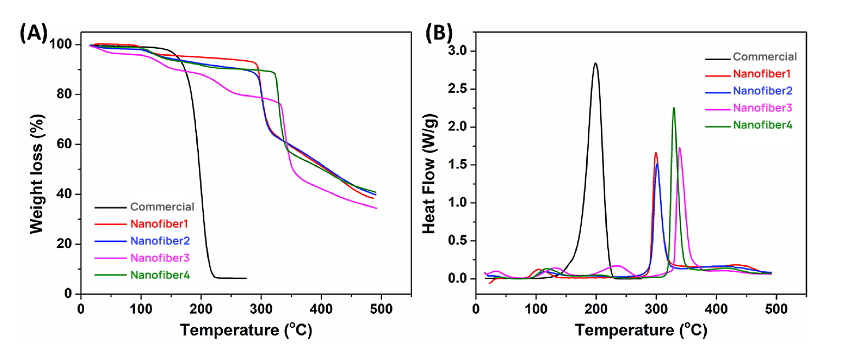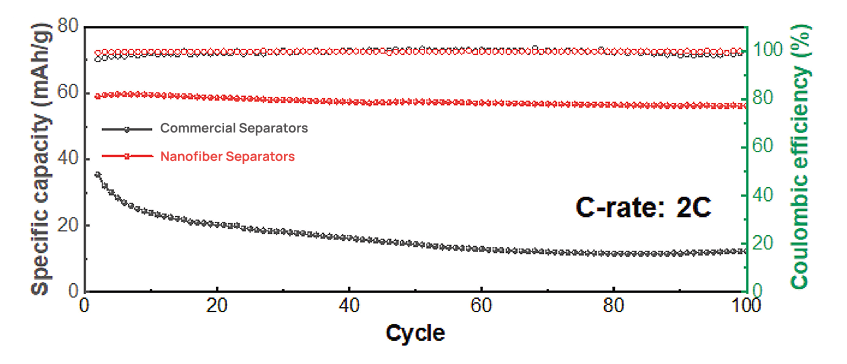
In the quest for safer, more reliable, and higher-performing batteries, nanotechnology has become a revolutionary force. Among the most promising innovations in this field is the battery separator, a critical component that plays a key role in improving battery safety, efficiency, and sustainability.
What Is a Battery Separator?
A battery separator is a crucial component that physically separates the anode and cathode, while still allowing ions to pass through. Traditionally made from polymer membranes, separators have now evolved with the integration of nanofiber materials. As a result, they offer significant improvements in thermal stability, mechanical strength, and ionic conductivity.

Fig. 1 Illustration of Nanofiber for Battery Separator
Advantages of Nanofiber Battery Separators
1. Enhanced Safety
Firstly, nanofiber separators exhibit superior thermal stability, which helps prevent short circuits and significantly reduces the risk of thermal runaway—a major safety concern in lithium-ion batteries.
2. Higher Ionic Conductivity
Secondly, the porous and interconnected structure of nanofibers allows for greater electrolyte uptake and faster ion transport. Consequently, this leads to improved battery efficiency and performance.
3. Mechanical Strength and Durability
In addition, nanofiber materials are highly resistant to shrinkage, tearing, and punctures. This mechanical robustness helps extend the battery’s lifespan and improves reliability under extreme conditions.
4. Sustainability
Moreover, many nanofiber separators are produced using eco-friendly materials, aligning with the global push toward greener and more sustainable energy solutions.
However, the benefits of nanofiber-based separators are not merely theoretical. Laboratory tests and performance evaluations have demonstrated measurable improvements in both thermal stability and battery efficiency when nanofiber separators are employed. These findings reinforce the material’s potential as a next-generation solution for energy storage.

Fig. 2 Thermal Stability Comparison Between Conventional and Nanofiber Battery Separator

Fig. 3 Battery Performance Comparison Between Conventional and Nanofiber Battery Separator
With the growing demand for high-performance batteries—especially in electric vehicles, portable electronics, and renewable energy systems, nanofiber battery separators are becoming increasingly essential. Their unique combination of safety, efficiency, durability, and sustainability positions them as a cornerstone technology in the future of energy storage.
Source:
https://doi.org/10.1016/j.matchemphys.2022.126354
https://doi.org/10.1016/j.matchemphys.2020.122780

